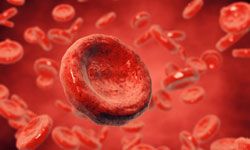Early Treatment With Ruxolitinib Induces High Response Rates in SR-aGVHD
The phase 3 REACH2 trial showed that early treatment with ruxolitinib 10 mg led to higher response rates vs that seen with the best available therapy in patients with grade II-IV steroid-refractory acute graft-vs-host disease.

Higher response rates were observed with ruxolitinib (Jakafi) given at 10 mg twice a day compared with the best available therapy (BAT) for patients aged 12 years and older with grade II-IV steroid-refractory acute graft-vs-host disease (SR-aGVHD), according to reults the phase 3 REACH2 trial (NCT02913261).1
In a post hoc analysis of the randomized, open-label study, investigators evaluated the overall response rate (ORR), any time best overall response (BOR), and duration of response (DOR) between 3 treatment groups included in the study.
ORR was defined as complete response (CR) plus partial response (PR) at day 28. DOR was the time from the first aGVHD response to progression or the addition of new systemic therapy.
Ruxolitinib was approved by the FDA in September 2021 for the treatment of patients 12 years and older with chronic GVHD after failure of 1 or 2 lines of systemic therapy.2 This was based on findings from the REACH3 trial (NCT03112603) which demonstrated an ORR of 49.7% in the ruxolitinib arm vs 25.6% in the BAT arm (odds ratio [OR], 2.99; 95% CI, 0.86-4.80; P < .0001). The failure-free survival was not reached in the experimental cohort vs 5.7 months for the BAT cohort. Additionally, the median DOR was not reached in the ruxolitinib arm but was 6.24 months in the BAT arm.
To be eligible for participation in the phase 3 REACH2 study, patients were required to be 12 years or older, have SR-aGVHD, and progressed following 3 or more days of high-dose systemic steroid therapy with or without calcineurin inhibitors (CNIs). Additionally, patients must have had a lack of response after 7 days or had progressed while being treated with a steroid taper, and have evidence of myeloid and platelet count engraftment.
Participants were randomized 1:1 with 154 patients randomized to receive ruxolitinib. One hundred and twelve patients received ruxolitinib early (0-3 days), 42 received it late (4 days and more), and 24 were given ruxolitinib very late (7 days and more). Then, 155 patients were administered the BAT, including 115 who received it early, 40 late, and 22 very late.
The primary end point of the study was ORR with key secondary end points including DOR, ORR, durable ORR, cumulative steroid dosing until day 56, OS, event-free survival, failure-free survival, malignancy relapse/progression, non-relapse mortality, patient-reported outcomes, corticosteroid dose, chronic GVHD crossover, and safety.
Among patients, the median age ranged from 48.5-55 years between each subgroup and males made up most of those enrolled (range, 40.9%-75.0%). Most patients had grade II (12.5%–50.0%) or III (40.2%-54.8%) aGVHD at the time of randomization, skin and lower gastrointestinal (GI) tract involvement were commonly seen (skin, 40.9%-66.1%; lower GI, 59.8%-75.0%), and across all subgroups, the mean time from grade II or greater aGVHD diagnosis to randomization was 19.8-46.0 days.
Findings showed that treatment with ruxolitinib led to an improved ORR compared with BAT in patient subgroups. ORR rates at day 28 for patients given ruxolitinib vs BAT were 62.5% vs 38.3% in the early group, 61.9% vs 42.5% in the late treatment group, and 62.5% vs 40.9% in the very late treatment group, respectively.
The CR was higher in patients given ruxolitinib vs BAT in early treatment (36.6% vs 20.0%). In the late group the CR with ruxolitinib was 28.6% vs 17.5% with BAT and 25.0% vs 18.2% for the very late treatment.
Looking at BOR at day 28, rates for ruxolitinib vs BAT were 81.3% vs 60.9% (OR, 2.74; 95% CI, 1.48, 5.06), 83.3% vs 60.0% (OR, 4.52; 95% CI, 1.40, 14.61), and 87.5% vs 63.6% (OR 4.67; 95% CI, 0.94, 23.23) in the early, late, and very late treatment arms. The DOR for early treatment was greater with ruxolitinib compared with BAT at 141.5 vs 99.3 for early treatment, 107.3 vs 91.7% for late, and 123.7 vs 87.1% for very late.
There were no differences observed between the subgroups given ruxolitinib regarding ORR or BOR. There was also a trend toward a higher likelihood of loss of response with late and very late initiation of ruxolitinib vs early.
Patients administered early ruxolitinib treatment had more durable responses compared with patients in the late or very late treatment groups, emphasizing the importance of early treatment initiation for patients with SR-aGVHD. Ruxolitinib demonstrates a clinical benefit in patients with SR-aGVHD vs BAT, regardless of treatment delay after the onset of disease. Initiating ruxolitinib on day 0-3 can result in higher remissions, however, further data are warranted.
REFERENCES:
Early versus late treatment with ruxolitinib in patients with steroid-refractory acute graft-versus-host disease: A post hoc analysis from the randomized phase 3 REACH2 study. Presented at: 2023 Transplantation & Cellular Therapy Meetings; February 15-19, 2023; Orlando, FL. Abstract 350.
Incyte announces FDA approval of Jakafi® (ruxolitinib) for treatment of chronic graft-versus-host disease (GVHD). News release. Incyte. September 22, 2021. Accessed February 15, 2023. https://bit.ly/3lN6lPo.